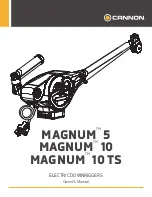
3.
Take another deburred length of ¼" stainless steel tubing and slip it through the supplied
compression nut and ferrule set. Confirm that the ferrule set is properly oriented and then
connect to the EXHAUST PORT.
Make sure the ¼ stainless steel tubing slips all the way into the compression fitting until it
bottoms out. Tighten the compression nut with 1 & ¼ turns.
4.
Run the other open end of the ¼" stainless steel tubing to a safe vented area outside of the
meter building.
CAUTION
The EXHAUST LINE must run slightly downhill the entire way to a safe area to allow any
condensate to drain outside and not back into the Analyzer. If you must run the EXHAUST
LINE vertically through the ceiling, install a 'knock-out' pot to capture the liquid condensate
just prior to going vertical. This will prevent condensate from running back into the Analyzer.
5.
Take the final deburred length of ¼" stainless steel tubing and slip it through the supplied
compression nut and ferrule set. Confirm that the ferrule set is properly oriented and then
connect to the BYPASS/DRAIN PORT.
Make sure the ¼ stainless steel tubing slips all the way into the compression fitting until it
bottoms out. Tighten the compression nut with 1 & ¼ turns.
6.
Run the other open end of the ¼" stainless steel tubing to a safe vented area outside of the
meter building.
CAUTION
Run the Bypass Line to the outside of the Meter Building in a downhill direction all the way to
a safe location. This will prevent water traps from forming and later freezing in cold weather,
creating a back pressure. A 24" H
2
O column will create 1 lb of back pressure and cause
readings to fluctuate. A 48" H
2
O column will create 2 lbs of back pressure and cause
readings to fluctuate even more.
Exhaust Gas Connection
Bypass Gas Connection
18
















































